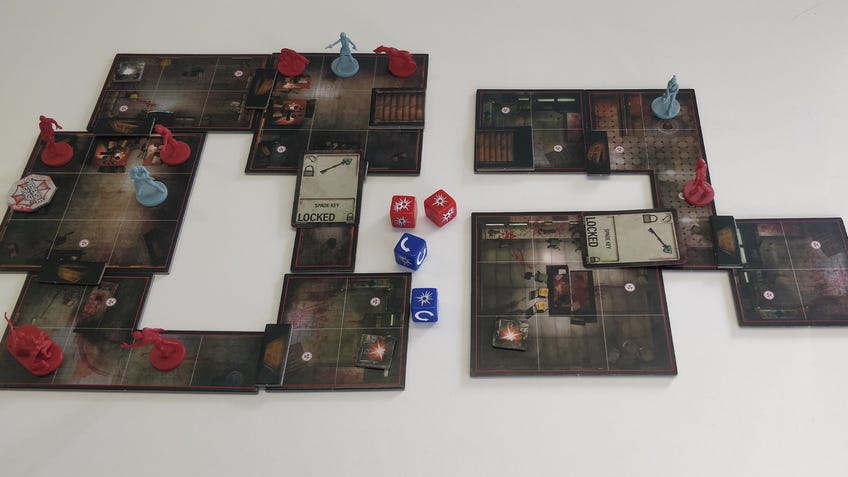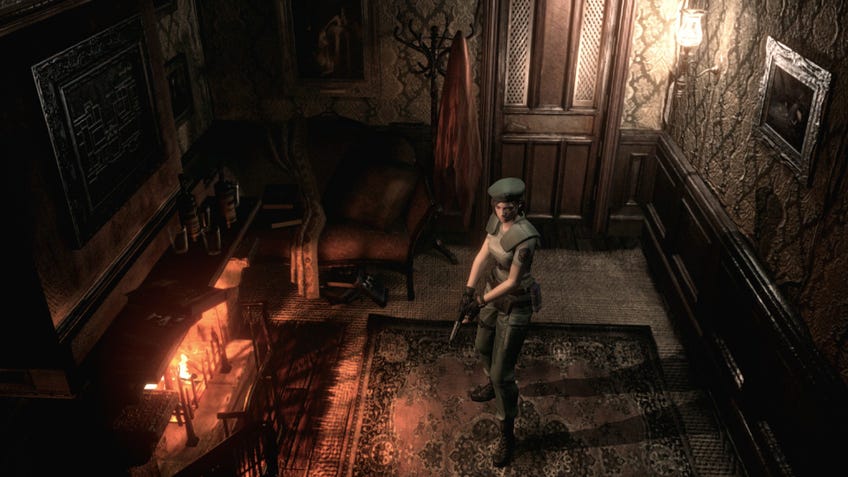Resident Evil’s puzzles deserve their own board game
Spencer Mansion in a box.
The Resident Evil board games published by Steamforged are all great tabletop adaptations. Unlike a lot of other video game board games, the Resident Evil ones understand that you don’t need to replicate every aspect of the thing you’re adapting. Instead, their presentation and gameplay make them feel like Resident Evil, but they’re designed as a tabletop game first-and-foremost.
Though these Steamforged board games do a great job at honouring the survival horror combat and atmosphere of their source material, besides a few inclusions in Resident Evil: The Board Game, they do so at the expense of a key aspect of the video games they’re based on – the puzzles.
The Resident Evil series has had an on-and-off relationship with puzzles, with the earlier entries featuring far more than some of later games. However, most of the best entries in the franchise - like Resident Evil 2 Remake and Resident Evil 7 - have included puzzles that require players to do more than simply kill whichever creature or person is currently holding the key to the next room.

The original Resident Evil – and its 2003 remake – is an incredibly puzzle-orientated video game, featuring a mansion that functions like an escape room that happens to be populated by monsters. Rather than having players interact with the occasional puzzle dotted amongst all the zombie killing, like Resident Evil 4, Resident Evil 1 is almost a 50/50 split between the combat and puzzles.
This is because the puzzles in Resident Evil 1 facilitate the combat by forcing players to navigate back-and-forth through the Spencer Mansion in order to solve them. Found a statue with an empty slot in a previous room? The jewel you just picked up might be the perfect fit for it – but you’ll have to make it through the zombie hordes standing in front of you to find out. You can even sometimes think you have the right solution to a puzzle only to reach it to discover you were wrong, wasting precious resources in the process.
Playing Resident Evil 1 with a group only heightens the feeling of it being alike an escape room game.
Just like how players need to be curious about the various components found in escape room board game series like Exit and Unlock, players in Resident Evil need to carefully examine different items and rooms to figure out the right way forward. A component in an Exit board game box that might have previously seemed unremarkable could suddenly become the answer to the players’ prayers when re-examined, just like a newly discovered element of an already visited room in Resident Evil.
Playing Resident Evil 1 with a group only heightens the feeling of it being alike an escape room game, with players sharing ideas and working together as if they would when playing an Exit or Unlock game.
Though Resident Evil may largely be famous for its zombies, the more cerebral elements that make up a fundamental part of its original DNA.
The puzzles in the original Resident Evil don’t just test players’ willingness to traverse their dangerous environments. For example, in the Resident Evil 2003 remake players need to switch on a certain combination of coloured lights in a gallery, to make a trio of paintings match the colours of the objects in another painting to progress. Another puzzle sees players following a book of cryptid instructions to mix different chemicals together in a particular order to make the pesticide they need to kill a man-eating plant. These sorts of puzzles more closely resemble the kind found in an escape room board game : like examining different parts of the game box for clues, turning dials to look for codes and solving conundrums written in a booklet.

All this is to say that it’s about time we saw a Resident Evil board game adaptation that honoured the series’ puzzles as well as its combat. An escape room style tabletop game featuring puzzles that required players to find the items and information in a monster-infested mansion, would be an excellent way of adapting the more puzzle-box style of Resident Evil. There could still be zombies, hunters, lickers, giant spiders and more grotesque horrors for players to face, but fighting them would be in service of reaching the in-game locations of the various physical documents and components need to progress.
Though Resident Evil may largely be famous for its zombies, giant mutant animals and gunplay, the more cerebral elements that make up a fundamental part of its original DNA deserve to be recognised in tabletop form too. The dream scenario is we get a board game that combines the intense combat of the Steamforged Resident Evil board games with the escape room-esque puzzles of the Exit and Unlock series. If Capcom is reading this – just make it happen already.

